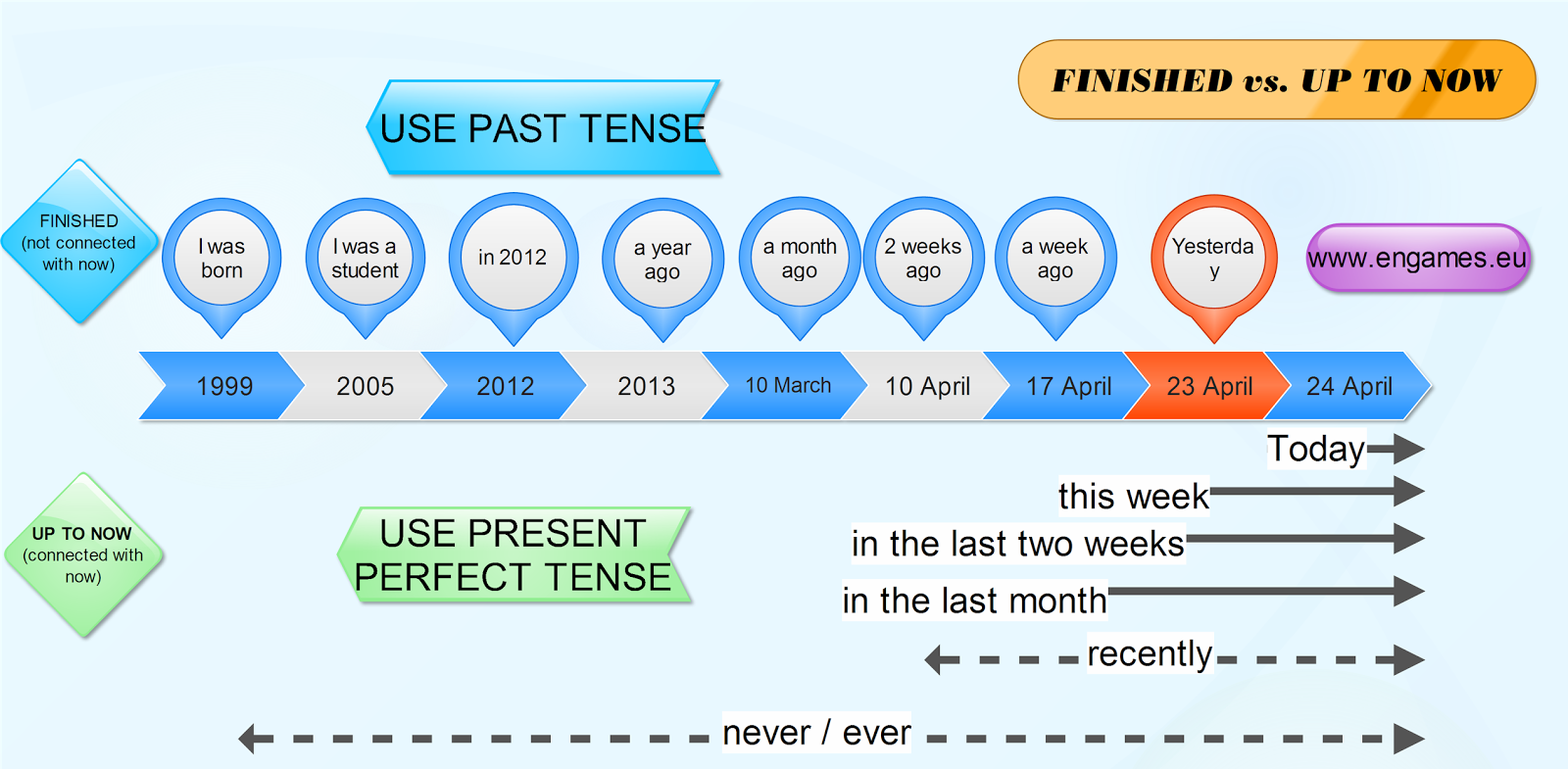
Keep your English alive! PAST SIMPLE vs. PRESENT PERFECT
Simple past english tried Past participle english tried More information Full conjugation of "to try" Translations for "to try" Full conjugation of "to try" Indicative Present I try you try he/she/it tries we try you try they try Present continuous
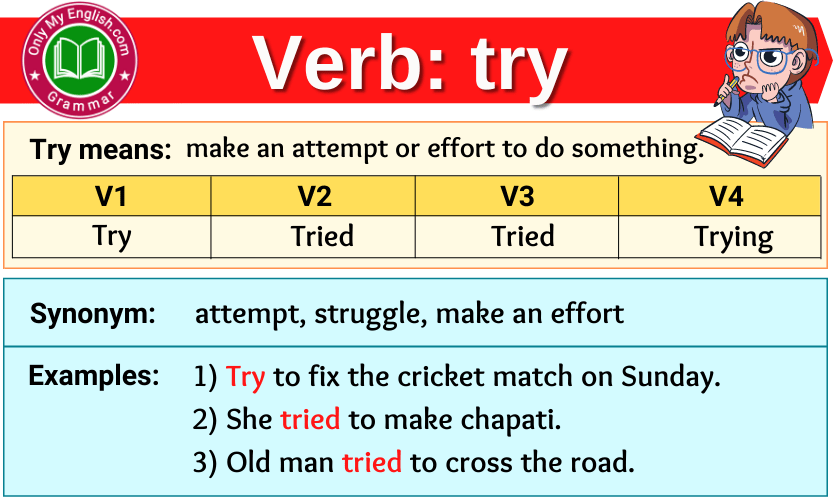
Try Verb Forms Past Tense, Past Participle & V1V2V3 »
What is the past tense of "try?" Most commonly, the past tense of the word "try" is "tried." Although the word form will change based on its participle. And the sentence where it's used. For example, referencing "try" in the present participle form will change it to "trying," but in the infinitive form, will be "try."

Simple Past Tense
Grammarly Updated on March 28, 2023 The simple past is a verb tense that is used to talk about things that happened or existed before now. Imagine someone asks you what your brother Wolfgang did while he was in town last weekend. Wolfgang entered a hula hoop contest. He won the silver medal. Here's a tip: Want to make sure your writing shines?
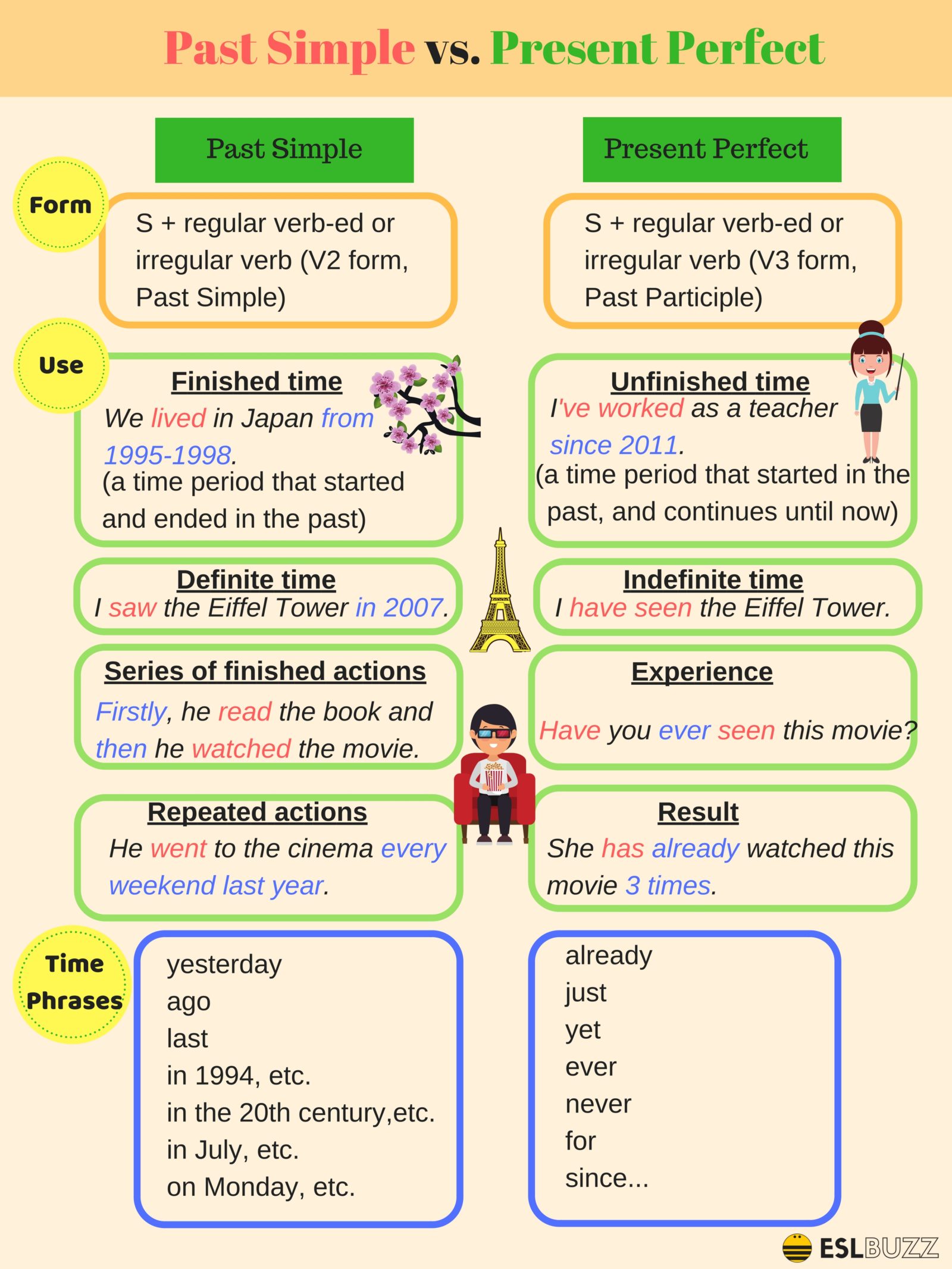
English Tenses Past Simple and Present Perfect ESLBUZZ
Try V1 V2 V3 V4 V5, Past Simple and Past Participle Form of Try Verb; Try Meaning; have a stab at, try, test, experiment V1, V2, V3, V4, V5 Form of Try Base Form Past Form Past Participle try tried tried Base Form s/es/ies ing Form try tries trying Synonym for Try have a stab at test experiment try out give it a try work study operate labor function judge taste experience die extract know.

Custom Writing Service www.fuste.pt
English verb TO TRY conjugated in all forms, with full audio, irregular highlighting, negative forms and contractions.. Infinitive: to try Gerund: trying Past participle: tried Simple past: tried Irregular forms Auxilliary verb Spelling change Use contractions. Positive Negative. Indicative.

Conjugación Try 🔸 Verbo inglés en todos los tiempos y formas Conjugar
Try Conjugation Indefinite / Simple Present Tense. I try to convince. We/You/They try to convince. He/She/It/Adam tries to convince. Present Continuous Tense. I am trying to convince. We/You/They are trying to convince. He/She/It/Adam is trying to convince. Present Perfect Tense. I have tried to convince. We/You/They have tried to convince.

Verb use in past simple
Past simple Past simple Level: beginner With most verbs, the past tense is formed by adding -ed: called liked wanted worked But there are a lot of irregular past tense forms in English. Here are the most common irregular verbs in English, with their past tense forms: We use the past tense to talk about: something that happened once in the past:

8. Past Simple Of Regular Verbs SPELLING RULES Write the past simple
Try in Past Continuous (Progressive) Tense. Singular. Plural. I was trying. We were trying. You were trying. You were trying. He/She/It was trying. They were trying.
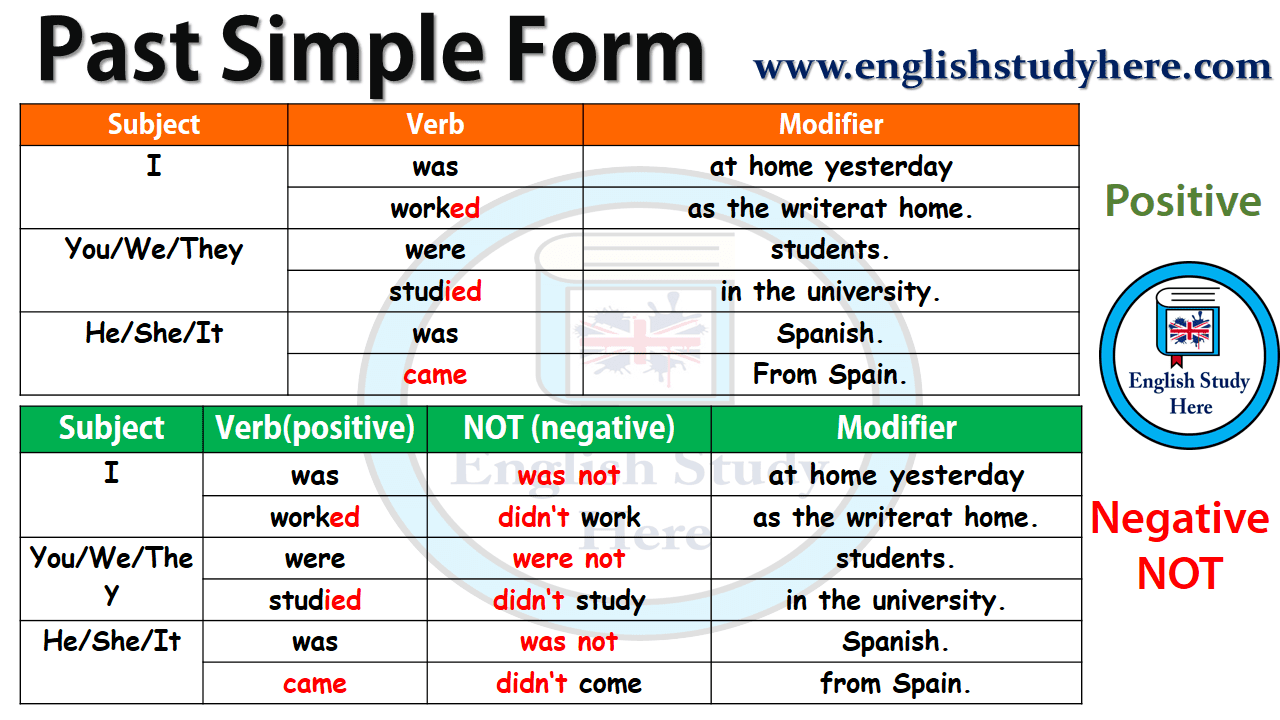
A2 UPDATED PAST SIMPLE EXPLANATION
'try' is the model of its conjugation. infinitive: present participle: past participle: (to) try trying tried definition in Spanish in French in Italian Indicative Perfect tenses Continuous (progressive) and emphatic tenses Compound continuous (progressive) tenses Conditional Imperative Subjunctive
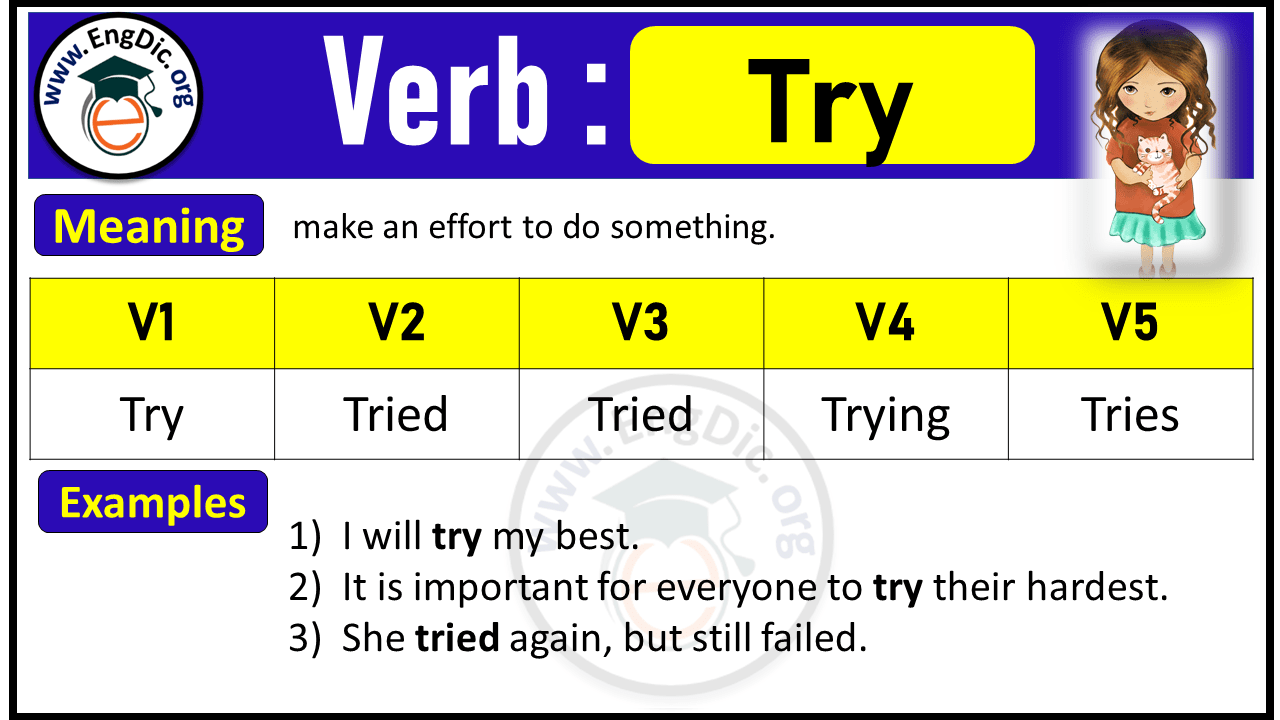
Try Verb Forms Past Tense and Past Participle (V1 V2 V3) EngDic
The past simple is the most common way of talking about past events or states which have finished. It is often used with past time references (e.g. yesterday, two years ago). Please explain past events or states! A past event could be one thing that happened in the past, or a repeated thing. I stopped at a zebra crossing.
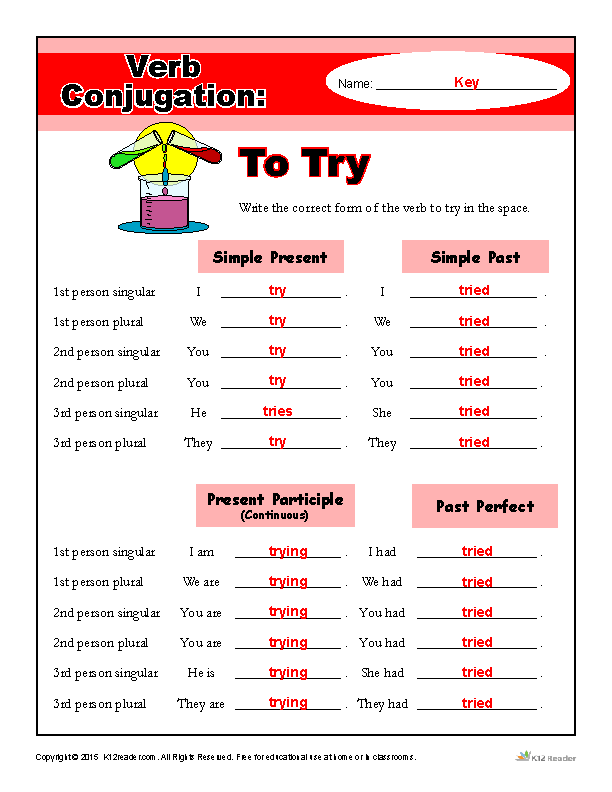
Verb Conjugation Worksheet To Play Grammar Worksheets
Fun & comprehensive online learning for primary and secondary. Sign up today!

BASIC ENGLISH I Simple Past Tense of the other verbs
The past simple tense (also called the simple past or preterite) is used to describe an action or series of actions that occurred in the past. The past simple of regular verbs is typically formed by adding "-ed" to the end of the infinitive (e.g., "talk" becomes "talked").
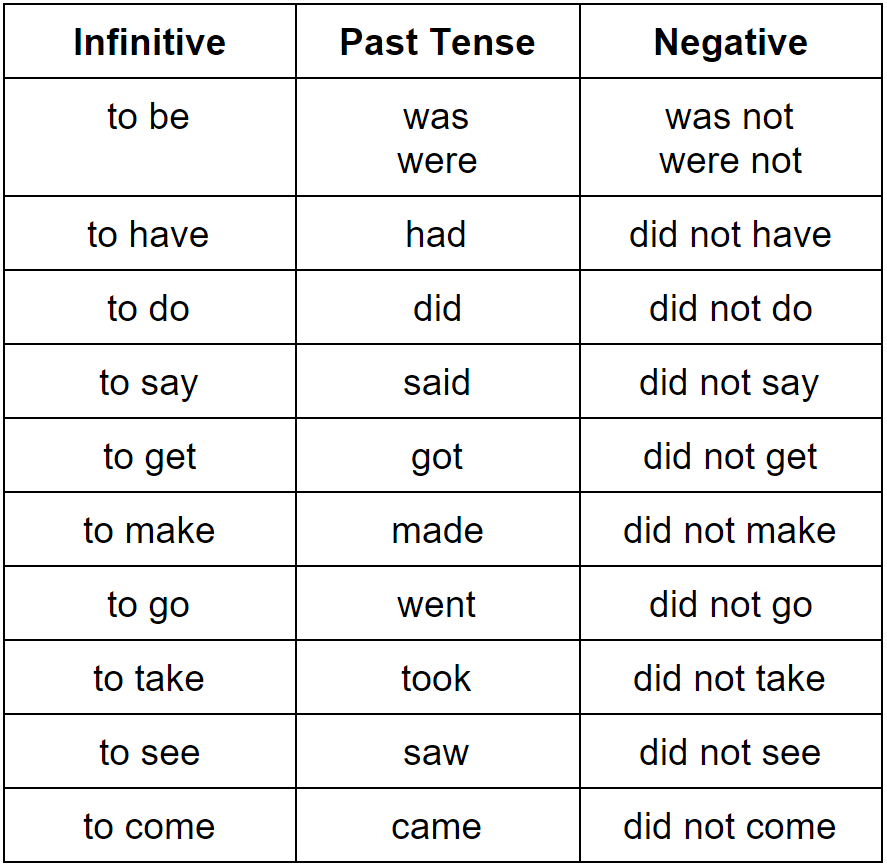
Simple Past Tense TO weBBie
Common mistakes with Past Simple (and how to avoid them!) 1. Using the past simple instead of the present perfect. For events that started in the past and are still ongoing now, learners sometimes try to use the past simple. However, the correct tense to use in this situation is the present perfect. I didn't finish my homework yet.

jcogtas THE SIMPLE PAST TENSE
Simple Tense Continuous Tense Perfect Tense Perfect Continuous Tense Conditional Imperative Verb forms Trainer Settings Click to start Conjugation Simple Tense Present Simple I try you try he, she tries we try you try they try Past Simple I tried you tried he, she tried we tried you tried they tried Future Simple I will try

Past Perfect Tense Definition & Useful Examples in English ESL
Simple Past Tense He/She/It tried. I tried. You/We/They tried. Past Continuous Tense He/She/It was trying. I was trying. You/We/They were trying. Past Perfect Tense He/She/It had tried. I had tried. You/We/They had tried. Past Perfect Continuous Tense He/She/It had been trying. I had been trying. You/We/They had been trying. Simple Future Tense

Past Tense Of Read, Past Participle Form of Read V1 V2 V3 Past Tense of
10.04.2020 The English verb 'try' is pronounced as [traɪ]. Related to: regular verbs. 3 forms of verb try: Infinitive (try), Past Simple - (tried), Past Participle - (tried). Here are the past tense forms of the verb try 👉 Forms of verb try in future and past simple and past participle. What is the past tense of try.